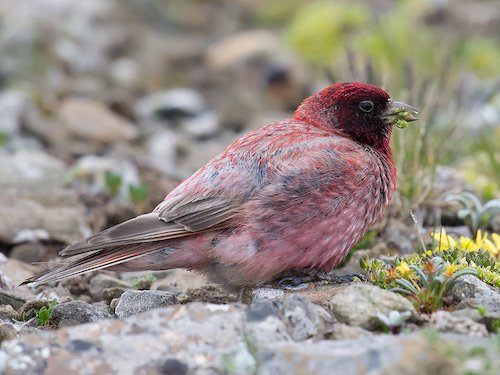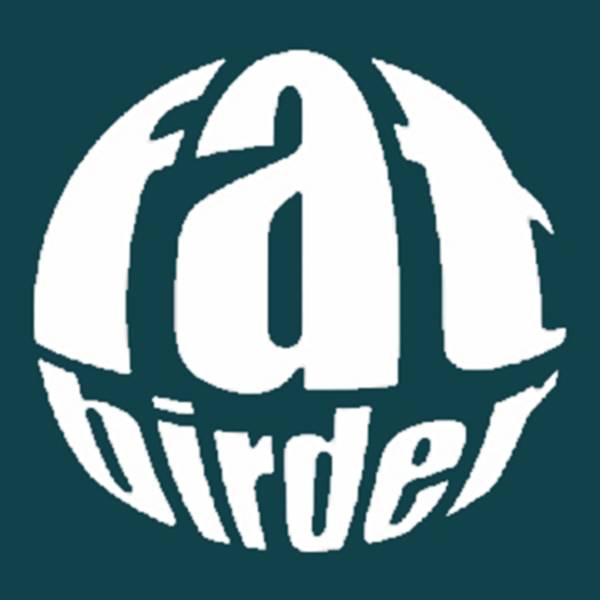Qinghai Province

Birding Qinghai
Qinghai Province is mainly the northeastern part of the Tibetan Plateau. The capital, Xining, lies at a pleasantly cool 2,200m in a broad, intensely cultivated valley. The hills immediately to the north of the city are a site for Pale Rosefinch and Plain Laughingthrush. Laoye Shan, a hill overlooking the town of Datong, is about 60km north of Xining. At Laoye Shan can be seen both White-browed and Crested Tit Warblers, White-winged Grosbeaks and Robin Accentor.The road to the Tibetan plateau goes west from Xining, and over a pass where the Sun and Moon Pagodas are prominent tourist attractions. Tibetan Ground Tit, Little Owl and Plain Mountain Finch forage on the hillsides below the prayer flags. Two hours drive further west and Qinghai Lake – the legendary Koko Nor – comes into view. The area was criss-crossed by Russian explorers in the late19th century, including by Nikolai Przevalski, who passed by in 1872. Tibetan plateau specialties such as White-browed Tit, Alashan Redstart and Pink-tailed Bunting can be found in the hills southwest of Qinghai Lake. The breeding birds at the edges of the lake are a draw for coachloads of domestic tourists near the town of Shinahe. At ‘Bird Island’ nearby they throw bread for both Pallas’s and Brown-headed Gulls. In May, hundreds of Bar-headed Geese breed in the area. There was a bad outbreak of avian flu here in May 2005, when many of the geese perished.Although roads have improved much in recent years this is still a wild and unforgiving environment, much of it lying above 3,000m elevation. Some high passes are 4,500m or above and blocked by snow for much of the year. One such pass is Er La, where the endemic Tibetan Rosefinch can be seen. Although most of the Yak one sees are domesticated, Qinghai’s open grasslands are also home to the Asiatic Wild Ass. Tibetan Gazelles may be seen as well as the foxes and occasional wolf that preys upon them.Two days drive southwest from Qinghai Lake along Route 314 will bring the keen birder to the busy town of Yushu (Jyekundo in Tibetan). Ibisbills may be seen in the river near the town. Another Russian explorer, Pyotr Koslov visited here in 1900. Further south, where the plateau breaks up into the valleys that have been carved out by the headwaters of the Yellow, Yangtse and Salween Rivers, Koslov discovered two distinctive species that still bear his name – a bunting and a babax. Both may still be found near the otherwise unremarkable town of Nanqian.Further west in Qinghai Province is its’ second city Golmud, a desert town north of the Kunlun Shan, the ‘Mountains of Darkness’. The road between Doulan and Golmud passes through miles of desert, but this is a good area to see Mongolian (formerly Henderson’s) Ground Jay.Qinghai is a rough but uniquely charming place that lingers in a birders’ mind long after the return home.
-
John & Jemi Holmes
| johnjemi@gmail.com
http://johnjemi.blogspot.com/
-
Number of bird species: 512
(As at April 2020)
Number of endemics: 1
Roborovski's Rosefinch Carpodacus roborowskii
-
IBA Qinghai Lake
WikiSatellite ViewQinghai Lake is the largest saltwater lake in China, and is also located on the "Roof of the World," the Qinghai-Tibet plateau. The lake itself lies at 3,600m elevation. The surrounding area is made up of beautiful rolling grasslands and filled with Ethnic Tibetans. Most pre-arranged tours will stop at Bird Island (niăo dăo)… -
NNR Sanjiangyuan & Zhaling Lake
InformationSatellite Viewunique plateau freshwater wetland at high altitude (4,273m asl) with marsh meadow and alpine vegetations, with the second largest lake in the sources of the Yellow River… -
NR Kekexili
WebsiteSatellite ViewLocated in the boundaries of Zhiduo County and Qumalai County of Qinghai Province, Kekexili Nature Reserve covers an area of 4.5 million hectares… -
NR Ngoring Lake
InformationSatellite ViewThe largest freshwater lake in the Yellow River catchment with high hydrological values, regulating run-offs, retaining sediments, maintaining water quality, and preventing flooding. At over 4,200 meters on semi-arid plateau, the lake is an important habitat for the globally endangered Grus nigricollis… -
NR Qinghai Lake
InformationSatellite ViewThe main protection targets are rare birds and plateau wetland ecosystem…
-
Summer Wong Bird Tours
Tour OperatorQinghai birding tours -
Alpine Birding
Tour OperatorBirding trips here are made for avid birders including yearly-run trips and new China birding trips developed by AlpineBirding team and guided by our bird experts in the best
-
2013 [07 July] - Peter Collaerts
PDF ReportDuring our ride to the south, we had bad weather all the time. We did not stop on many places. On our ride back to the north, we stopped at the marshes near Madoi. Here we found Lesser Sand Plover and a couple of Black-necked Cranes… -
2013 [08 August] - Jesper Hornskov
PDF ReportAnnotated list… -
2014 [08 August] - Henk Hendriks
PDF Report...It did not take long before we scored our first target, Reed Parrotbill. It took a littlelonger and after observing many Yellow Bitterns, we finally observed a VonSchrenck’s Bittern. Whiskered Tern was common and we regularly observedOriental Reed Warbler at the reedy edges of the lake. A small flock of Asian AzurewingedMagpies gave good views... -
2014 [08 August] - Sjef Ollers
PDF Report -
2017 [07 July] - Birthe Rasmussen
PDF ReportThe Tibetan Plateau stands over 5 kmabove the sea level and is surroundedby imposing mountain ranges that harbor the World ́s two highest summits –Mount Everest and K2. Perhaps the most well-known person of the region is the Dalai Lama, Tibet ́s spiritual leader and an advocate for a peaceful solution to Tibet ́s bid for independence. -
2017 [07 July] - James Eaton
PDF ReportTibetan Plateau & Xinjiang2nd–21stJuly 2017Leader: James EatonParticipants: John Clark & Mary Ward-Jackson, John Geeson, Barbara Greatorex, Albert Low, Denis Walls, Ed WilkinsonPrzewalski’s Pinktail© James Eaton/Birdtour AsiaFor those who like truly wild places, very localised speciality birds and a smattering of rare mammals, our tour southwards across the Tibetan plateau culminating in the fabled Tibet,where the fabulous Potala Palace rivals any of the natural wonders seen during the tour, is perhaps the most iconic tour in Asia.

